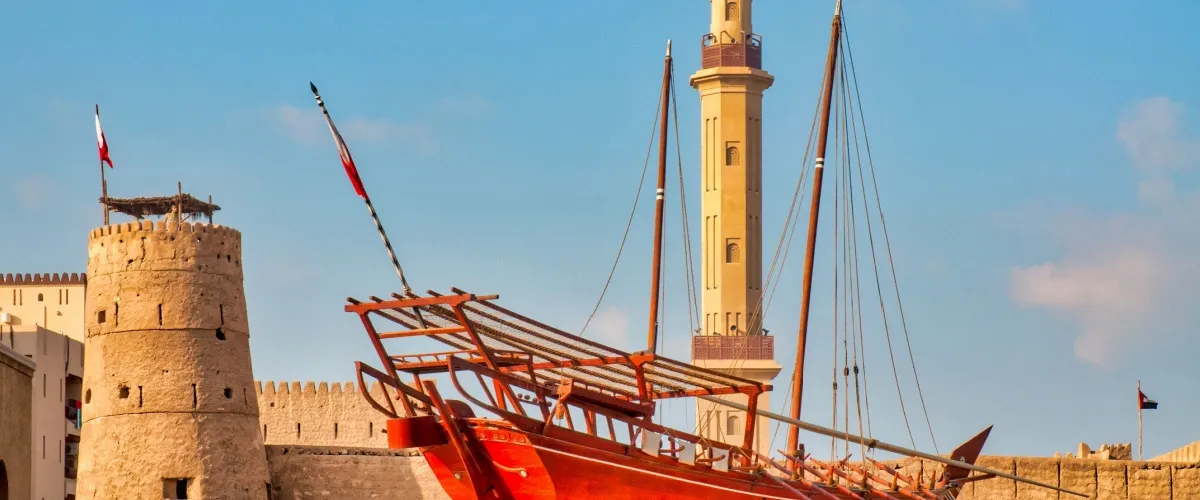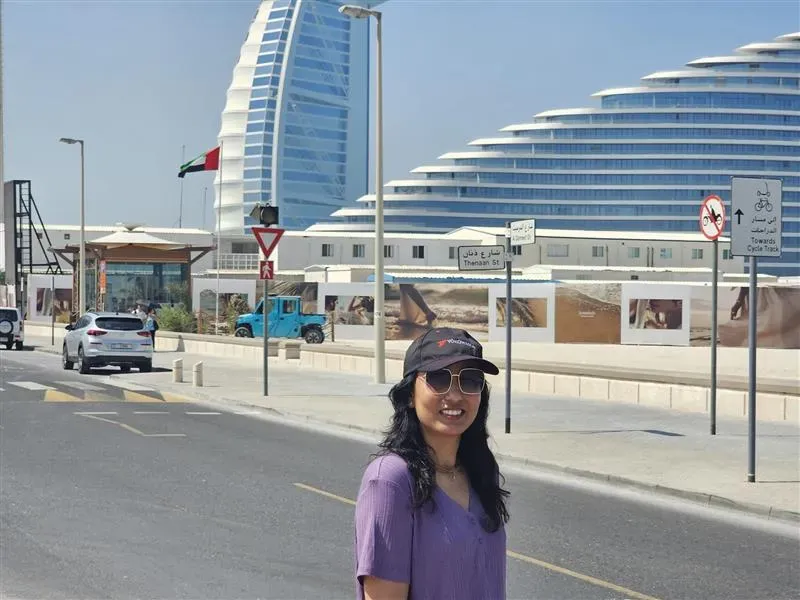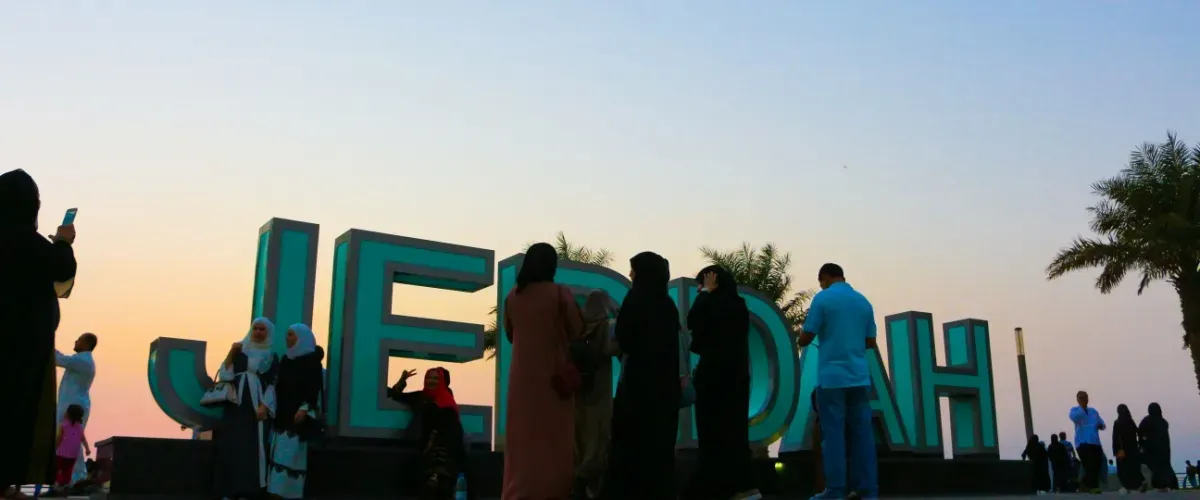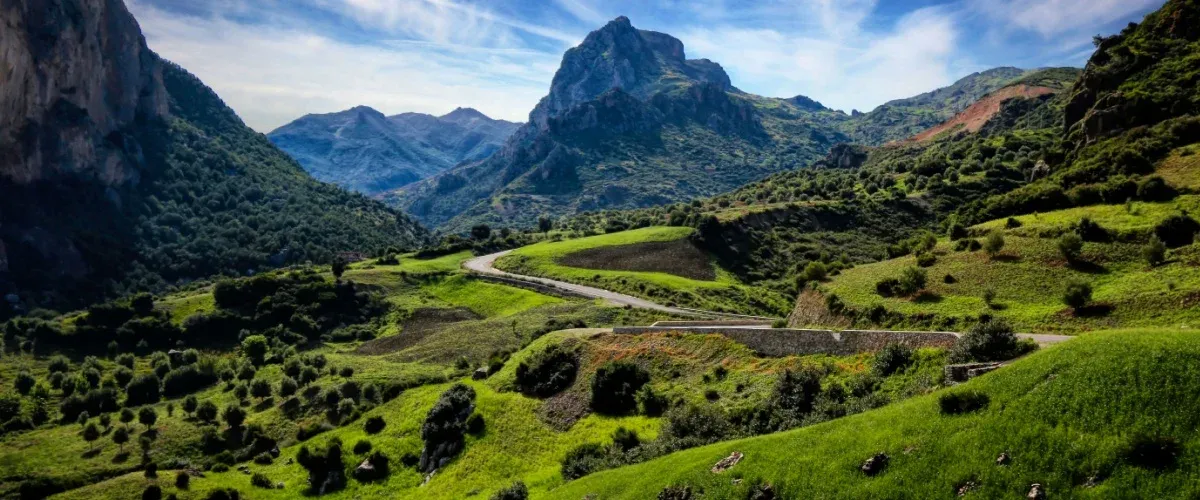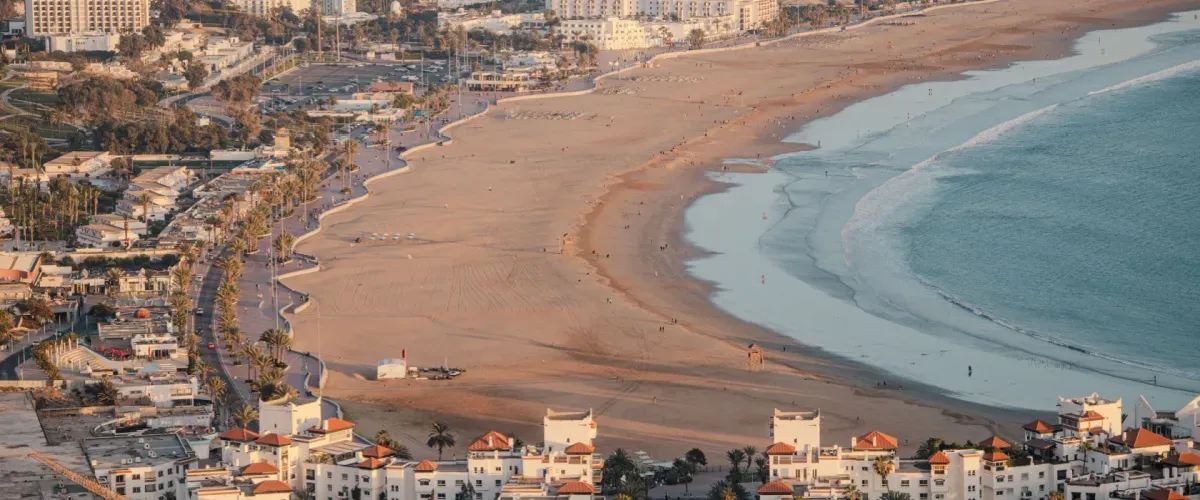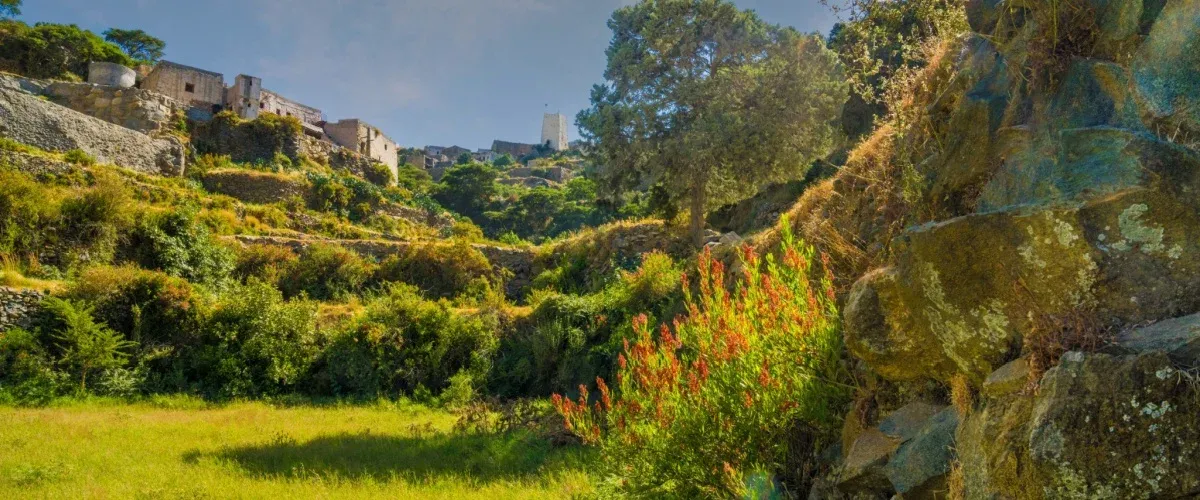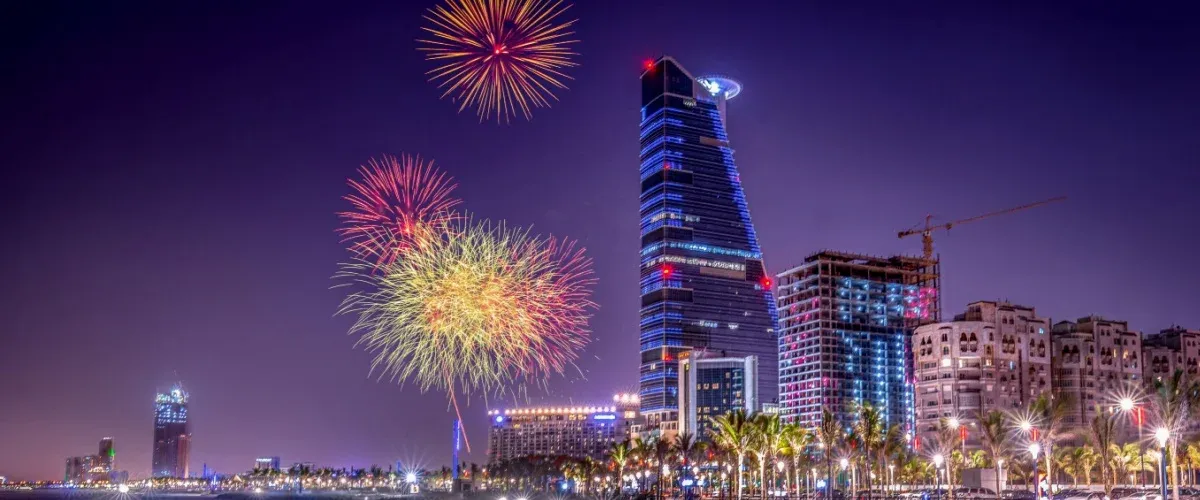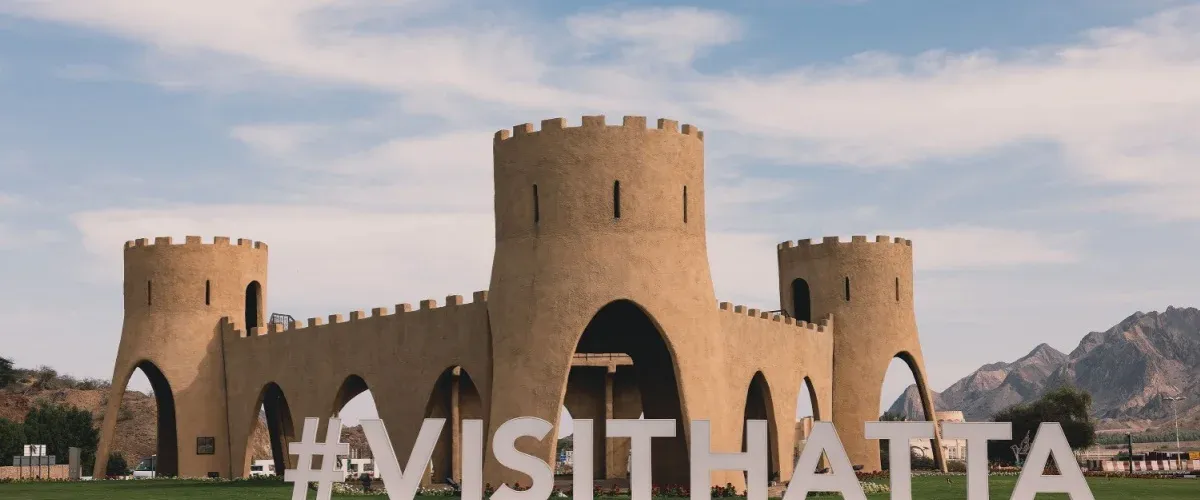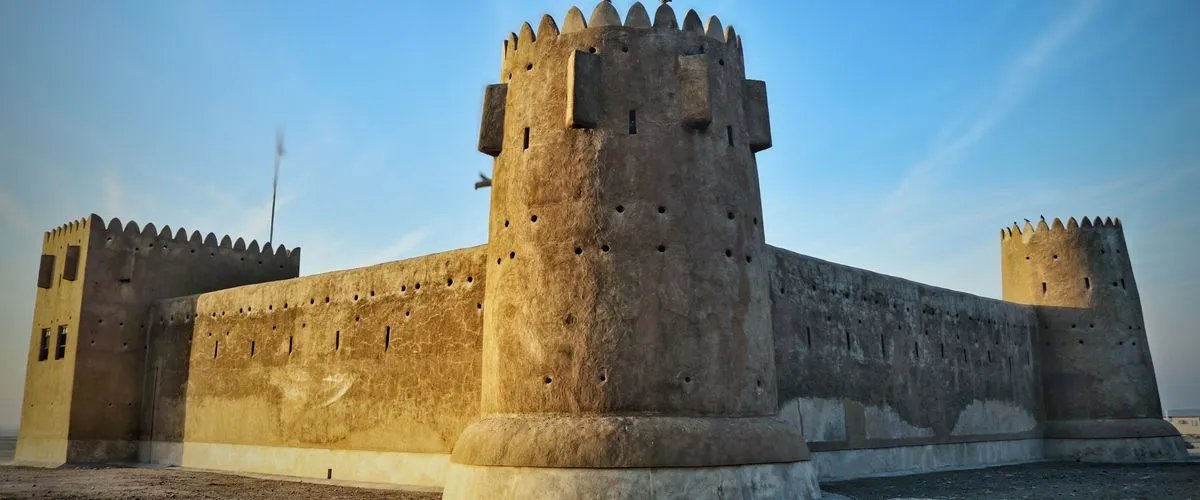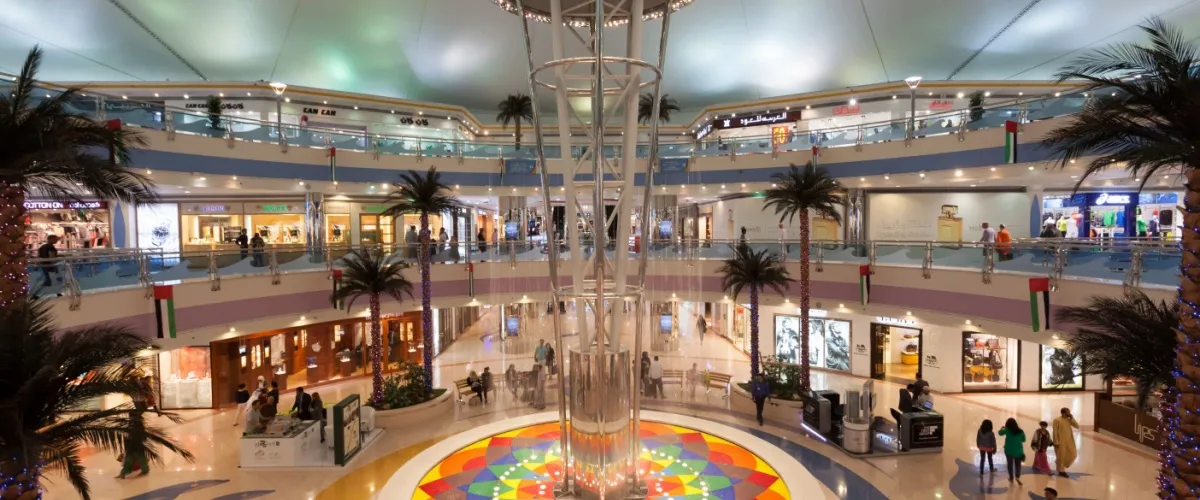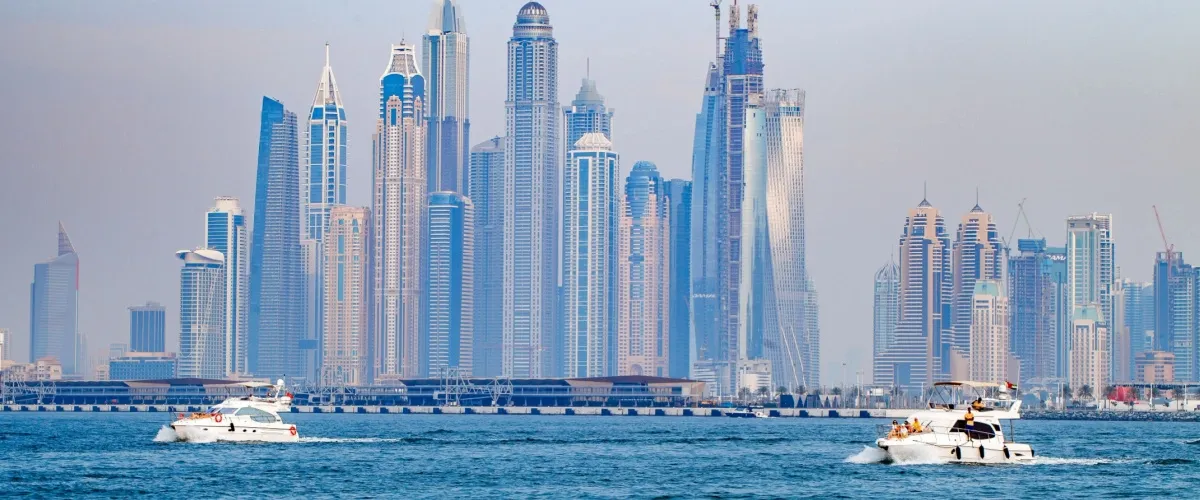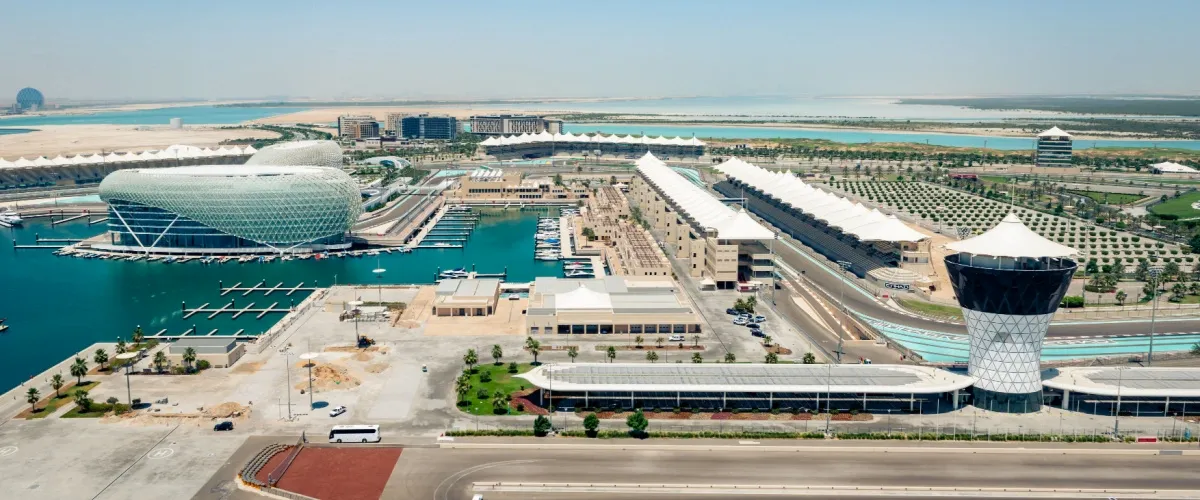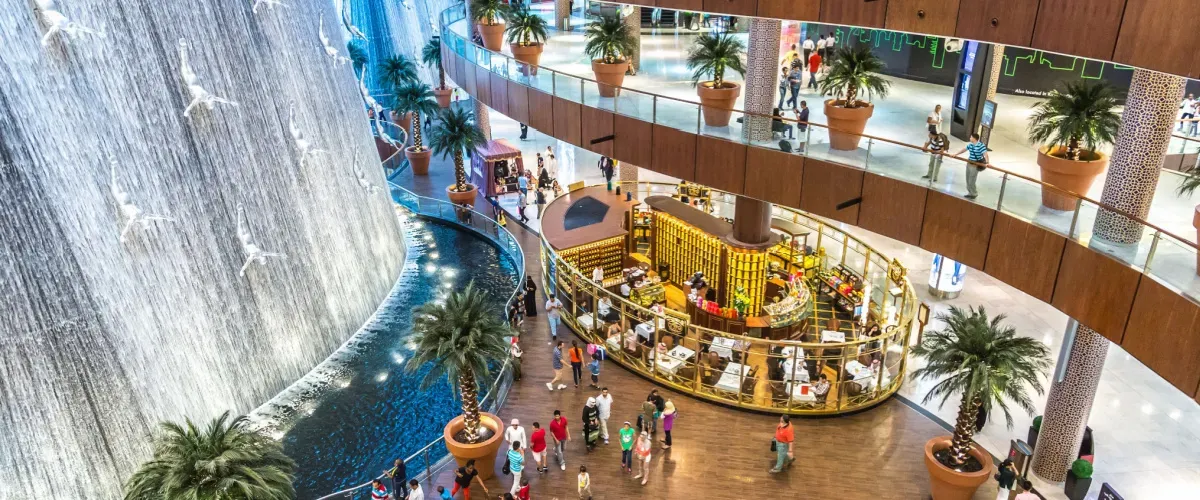Dubai, known for its futuristic vibes, is the most sophisticated place in the UAE. To experience its past, visitors can visit the Al Fahidi Historical Neighbourhood and Dubai Museum in Old Dubai. The museum offers an authentic representation of Dubai's past as a desert land. The Al Fahidi Fort Museum is a mesmerizing treasure trove that beckons visitors into Dubai's rich history. The fort's grandeur unfolds through its majestic gates, whispering tales of bygone eras. The intricately designed architecture transports visitors to a time when this bastion guarded the city's heart. Inside, visitors can immerse themselves in a captivating array of artifacts, showcasing Dubai's vibrant past. From ancient weaponry to traditional Emirati costumes, each exhibit invites visitors to touch the essence of a thriving culture.
Al Fahidi Fort Museum Dubai: All You Need to Know About the Fort Museum
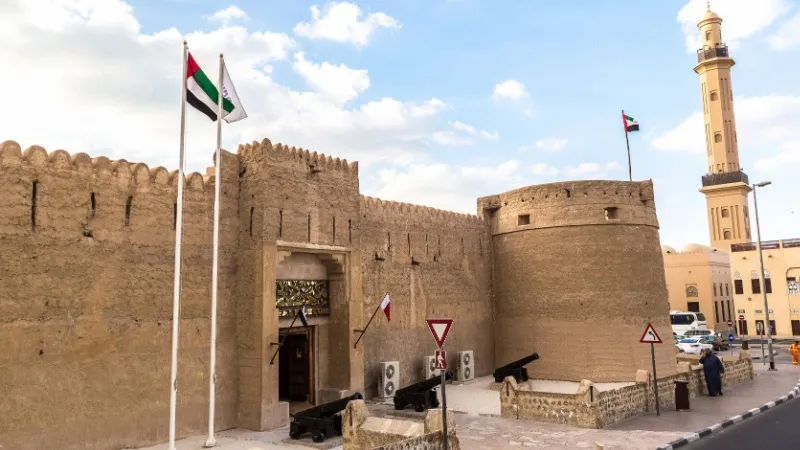
Step into the enchanting world of Al Fahidi Fort Museum, where the past comes alive to embrace you in its arms. The fort, a testament to Dubai's enduring charm, stands proud, a guardian of tales untold. Its sand-colored walls echo with the whispers of history, inviting you to explore every nook. Inside, a collection of artifacts unfolds like a cherished storybook. Let your fingers trace the contours of ancient pottery, and your gaze dance upon vintage maps that paint the city's evolution. Al Fahidi Fort Museum invites you on a delightful stroll through time, where you become a part of Dubai's captivating narrative.
History of Al Fahidi Fort Dubai: Explore the UAE’s Cultural Heritage
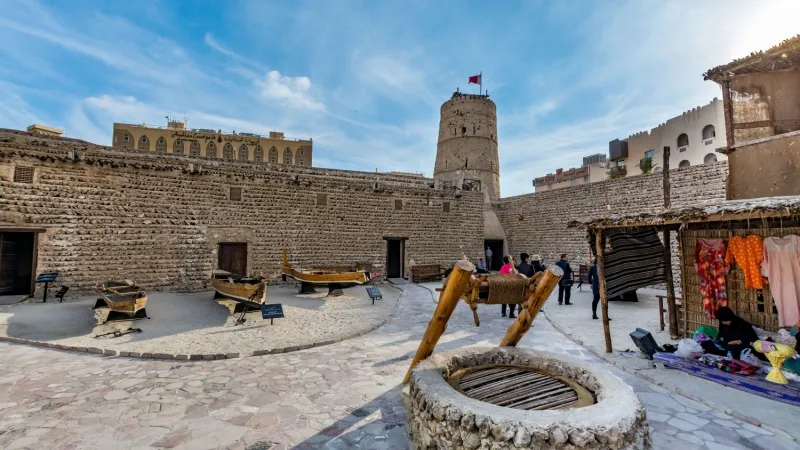
Al Fahidi Fort, a historic sentinel in Dubai, has a rich history dating back to 1787. Built from coral and gypsum, it served as a defensive bastion and the residence of Dubai's rulers. The fort's sand-colored walls reflect the city's early days and its evolution from a small fishing village to a global hub. The fort's enduring architecture, featuring traditional wind towers and a central courtyard, showcases Emirati craftsmanship.
The Dubai Museum Al Fahidi Fort, located near the city's edge, is among the best places to visit in Dubai and houses Dubai's precious remnants from its past. Built in the 1700s, the fort served as a defensive fortress, weapon storage, and prison. Later, it was renovated as the Museum Dubai Al Fahidi Fort to preserve Dubai's Bedouin heritage in an extensive museum collection. The oldest building in Dubai, opened in 1971, takes visitors back in time to when Dubai was trying to survive the harsh desert climate. In 1995, an underground museum was added to the old fort, containing monuments, diagrams, documents, tombs, and other relics that provide a comprehensive view of Dubai's earliest settlements. The museum portrays a period when Dubai was a small fishing and trading settlement, contrasting with modern-day Dubai.
Things to Do at Al Fahidi Fort Museum Dubai

Dubai Museum and Al Fahidi Fort are two faces of the same coin, as the fort only renovated into a museum that boasts to be the best with older time charm and collections. Here are the things to do in Dubai, that you may experience and see, once you reach Al Fahidi Museum.
- Explore the Architecture of the Museum
- Witness the Charm of the Traditional Boats and Weapons
- Stroll in the Ancient Souks
- See the Bygone Era's Arish and Majlis
- Explore the Galleries and Exhibits
- Visit the Al Fahidi Historical District Dubai
Suggested Read: Things To Do In UAE For An Exhilarating Holiday Experience In The Emirates
1. Explore the Architecture of the Museum

Nestled within Dubai's Al Fahidi Historical District, the architecture of Al Fahidi Fort Museum is a captivating blend of history and craftsmanship. Al Fahidi Fort is a square-shaped fort built of coral rock and mortar in phases. It features a reconstruction of old city walls, a tall dhow (Traditional Boat), and two cannons guarding the main gate. The fort houses internal halls, including a ticket office, a collection of weapons, a model of the city in 1820 AD, and traditional musical instruments. The central courtyard houses a bronze cannon, a well, and various boats. In the corner, there is a traditional summer house called Arish, made from weaved palm fronds, with seating, sleeping areas, and a kitchen filled with household furnishings. The Arish features a wind tower design for pre-electricity air conditioning.
Suggested Read: Places to Visit in UAE: Discovering the Best of Arabian Wonders in the United Arab Emirates
2. Witness the Charm of the Traditional Boats and Weapons
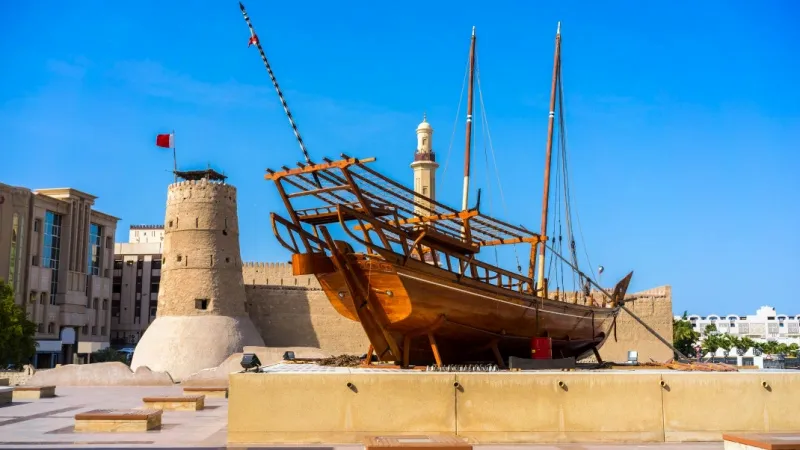
Step into one of the best museums in Dubai, and you'll be transported to an era where the sea was both lifeline and frontier. The exhibits proudly display traditional boats, emphasizing Dubai's maritime heritage. Weathered dhows and intricate wooden vessels share space with an impressive array of ancient weaponry, narrating the tales of seafaring merchants and resilient defenders. Each item, from the curved blades to the polished cannons, serves as a silent witness to the challenges and triumphs of Dubai's past.
3. Stroll in the Ancient Souks

Wander through the exhibits at Al Fahidi Fort Museum, and you'll discover the echoes of ancient souks that once animated the bustling streets of Dubai. Unwind and explore the dynamic nightlife in Dubai, a modern contrast to its historical artifacts on display that reflect the vibrant trading culture of the region. You may see the intricate textiles, spices, and precious metals transporting you to the lively marketplaces that were the heart of the city's commerce. These remnants of the past paint a vivid picture of a bygone era, where barter and exchange shaped the economic landscape of Dubai.
4. See the Bygone Era's Arish and Majlis
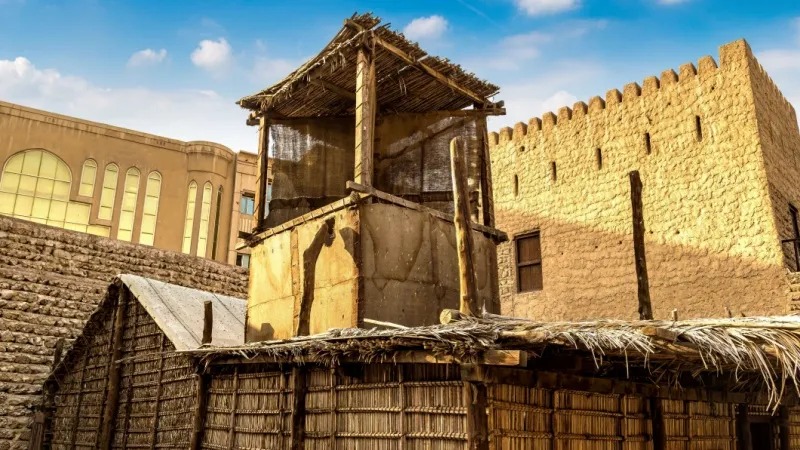
Immerse yourself in the cultural uniqueness of traditional Emirati life within Al Fahidi Fort Museum. The preserved Arish, a palm-frond house, and the Majlis, a communal sitting area, invite you to experience the hospitality and simplicity of the past. These authentic spaces provide insight into the daily life of the residents, offering a glimpse into the social fabric that once defined the community within the fort's protective walls.
Suggested Read: Top Skyscrapers in Dubai: A Majestic Skyline of Architectural Marvels
5. Explore the Galleries and Exhibits
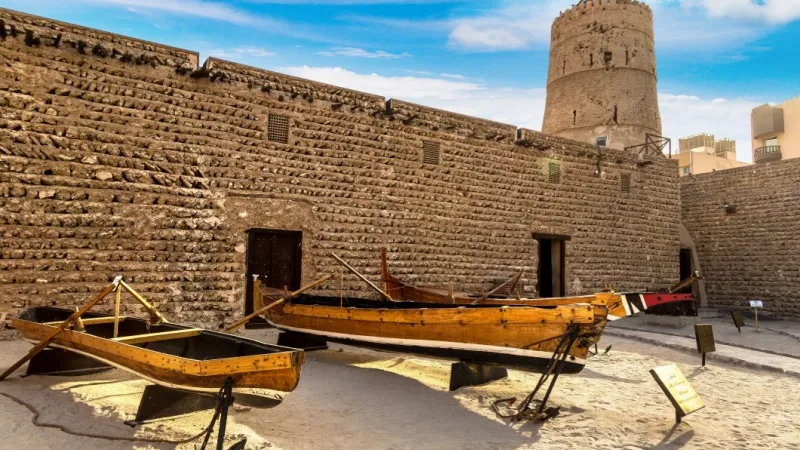
Al Fahidi Fort Museum's galleries unfold like chapters in a captivating story. From archaeological finds to ethnographic displays, each exhibit offers a window into different aspects of Dubai's history. Photographs, artifacts, and interactive installations create a dynamic narrative that engages visitors, fostering a deeper connection to the city's roots. The carefully curated exhibits highlight the resilience and adaptability of Dubai throughout the ages.
6. Visit the Al Fahidi Historical District Dubai
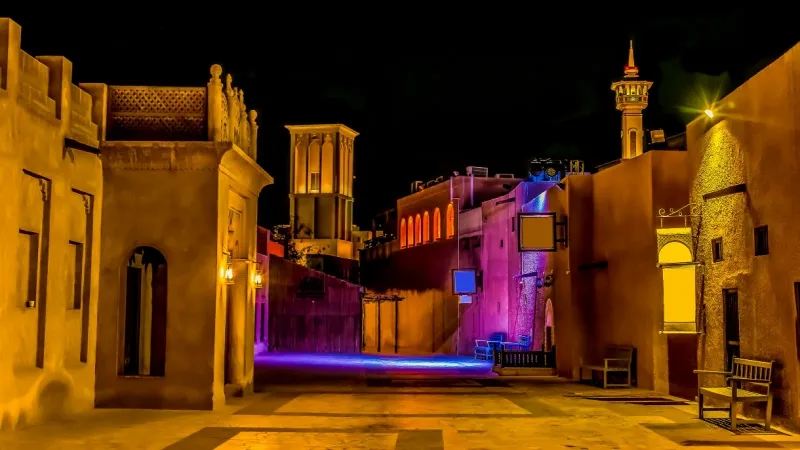
Al Fahidi Historical District, home to the fort, is a living testament to the preservation of Dubai's cultural heritage. You can imagine yourself walking on the cobblestone streets through restored buildings, creating a charming atmosphere for an experience of royal honeymoon in Dubai. Beyond the fort's walls, the district is a tapestry of art galleries, cafes, and cultural centers, seamlessly blending the old with the new. Al Fahidi Historical District encapsulates the essence of Dubai's commitment to honoring its past while embracing the dynamic spirit of the present.
Tips for Visiting Dubai Museum at Al Fahidi Fort
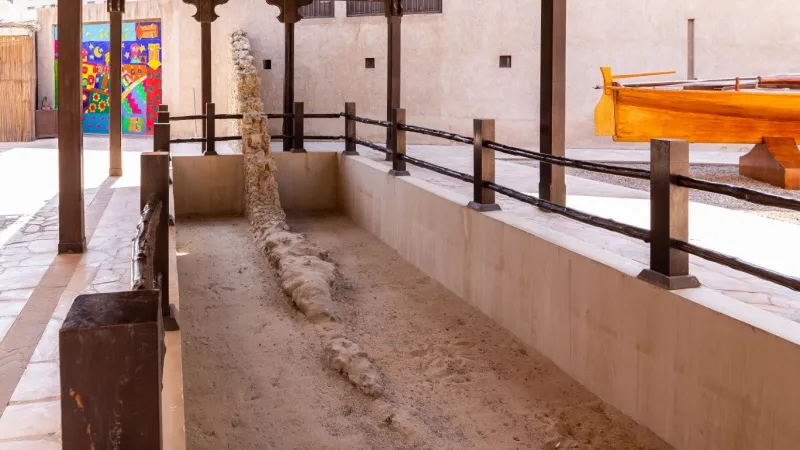
Dubai's blend of culture and tradition makes it a popular travel destination in Dubai. Follow these tips for an exciting trip to the Dubai Museum:
- Visitors are prohibited from touching or mishandling the artifacts
- Damage to the property can result in severe fines
- Visitors are required to keep their mobile phones in silent mode
- Take prior permission to use cameras inside the premises
- Visitors will not be permitted to enter before or after the scheduled times
- It is highly recommended to adhere to a proper dress code
- Smoking and consumption of alcohol are strictly prohibited
- Keep yourself hydrated and use sun protections
Suggested Read: Best Cafes in Dubai: Where Culinary Art & Culture Finds Space!
Additional Information about Al Fahidi Fort Museum

If you are planning to visit this traditional museum to dig deep in the history of the city, you need to know a few things in advance. Here’s your quick other essential information that you must check:
Dubai Museum Al Fahidi Fort Location: Al Fahidi Fort Museum, Al Fahidi Street, Bur Dubai, Dubai, UAE
Opening Hours:
- Saturday to Thursday: 8:30 AM to 8:30 PM
- Friday: 2:30 PM to 8:30 PM
Note: Dubai Museum is currently closed until further notice so kindly check back for re-opening and updated operating hours
Current Status: Ongoing Renovation (Temporarily Closed)
Time Needed: 1 to 2 hours
Entry Fee: AED. 3 for Adults & AED. 1 for Children (under 6 years)
Construction Year: 1787
Transformation into Museum: 1971
Exhibitions: Traditional boats, ancient weaponry, artifacts from ancient souks
Best Time to Visit Dubai Museum Al Fahidi Fort Dubai: November and April
Nearby Hotels: XVA Art Hotel, Arabian Courtyard Hotel & Spa, Orient Guest House, Concorde Palace Hotel Dubai, The George Hotel by Saffron, Palm Beach Hotel Bur Dubai
Nearby Restaurants: Arabian Tea House, Local House Restaurant, Restaurants at The Arabian Courtyard Hotel & Spa, Creek Side Restaurant & Café, Falcon Oasis Floating Restaurant, and Baskins Robbins Ice Cream are few of the famous restaurants in Dubai, you can find here.
Nearby Markets: Meena Bazaar, Textile Souk, Old Souk, Spice Souk, Gold Souk, Al Khaleej Centre, Perfume Souk, Al-Ain Centre
How to Reach: Al Fahidi Fort, situated in the Al Fahidi Historical Neighbourhood, is conveniently located near the Al Shindagha Museum in Dubai. Accessible via the Dubai green metro line, bus, or taxi, it is 20 minutes from Dubai Downtown, 12 minutes from Dubai International Airport, and 30 minutes from Palm Jumeirah and Dubai Marina.
Suggested Read: Adventure Activities in Dubai: For Non-Stop Fun and Thrilling Experiences
As you bid farewell to the echoes of history within Al Fahidi Fort Museum, remember, this journey is more than a stroll through time; it's an embrace of Dubai's soul. From the majestic architecture whispering tales to the vibrant exhibits mirroring the difficult past, you've touched the beating heart of this ever-evolving city. As the fort stands tall, so does Dubai's spirit, resilient and rooted. Now, armed with the stories and artifacts, you're not just a visitor but a keeper of this cultural haven. Until the next adventure with Dubai tour packages, carry the essence of Al Fahidi's legacy, forever engraved into your soul.
Al Fahidi Fort Dubai FAQs
Al Fahidi Museum, also known as Dubai Museum, is a cultural landmark located in the Al Fahidi Historical District of Dubai. Housed within the iconic Al Fahidi Fort, it serves as a repository of Dubai's rich history, showcasing the emirate's cultural heritage and the journey from a traditional trading post to a modern metropolis.
Al Fahidi Fort was constructed in 1787, making it the oldest existing building in Dubai. Originally built as a defensive structure, the fort played a vital role in safeguarding the city against maritime threats.
The architectural significance of Al Fahidi Fort lies in its traditional Arabian defensive design. The fort is characterized by its sand-colored walls, wind towers that provided natural ventilation, and a central courtyard, reflecting the architectural style of the time.
Al Fahidi Museum is well-connected by public transportation. Visitors can easily reach the museum using the Dubai Metro, buses, or taxis. The Al Fahidi Historical District is a central location, and various modes of public transportation provide convenient access to the area.
The museum exhibits artifacts related to ancient souks, recreating the vibrant atmosphere of traditional marketplaces. Visitors can view displays of textiles, spices, and precious metals, giving a glimpse into the bustling trading culture that shaped Dubai.
Al Fahidi Museum features a range of galleries and exhibits covering various aspects of Dubai's history. These include archaeological findings, ethnographic displays, and interactive installations, providing a comprehensive overview of the city's evolution.
Yes, there is an entrance fee to visit Al Fahidi Museum. The fee structure may vary for different age groups and nationalities.
Yes, guided tours are available for visitors who wish to delve deeper into the museum's exhibits and gain a more thorough understanding of Dubai's history. Knowledgeable guides provide insights into the significance of various displays.
Saturday to Thursday from 08:30 am to 08:30 pm and from 02:30 pm to 08:30 pm on Fridays. But it's recommended to check the official website or contact the museum directly for the most up-to-date information on opening hours.
Yes, there is typically a souvenir shop within the museum where visitors can purchase a variety of memorabilia related to Dubai's history and culture. The shop may offer items such as postcards, books, and traditional crafts.

